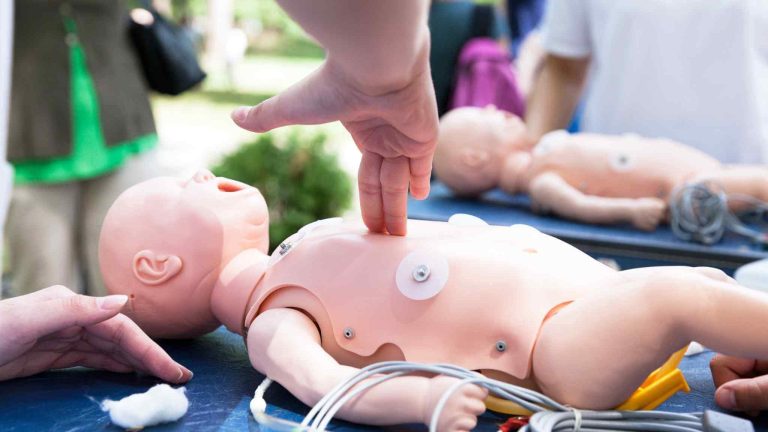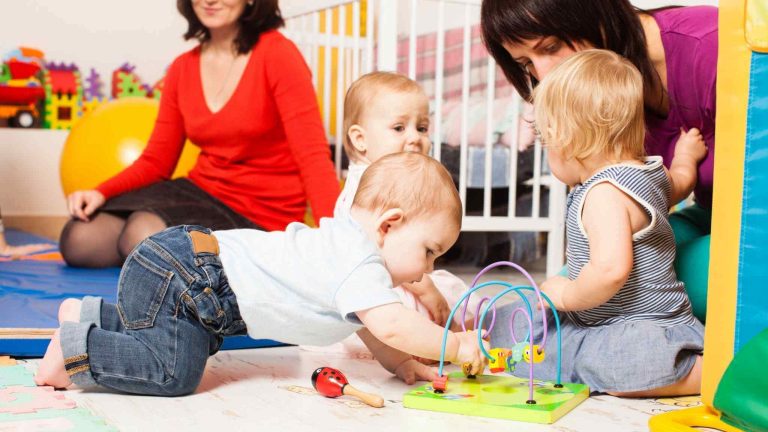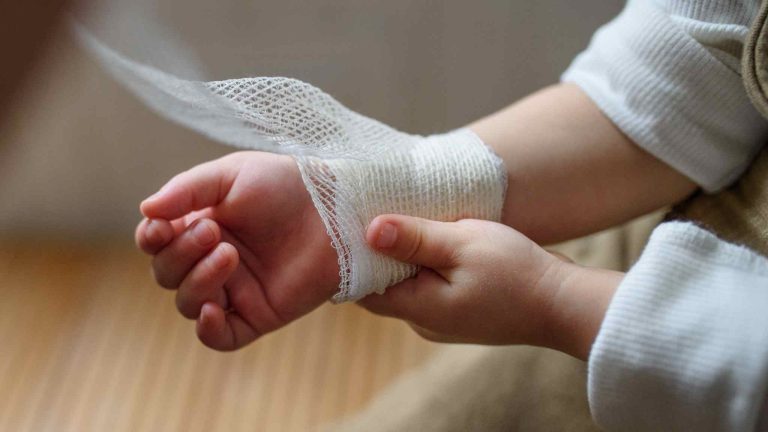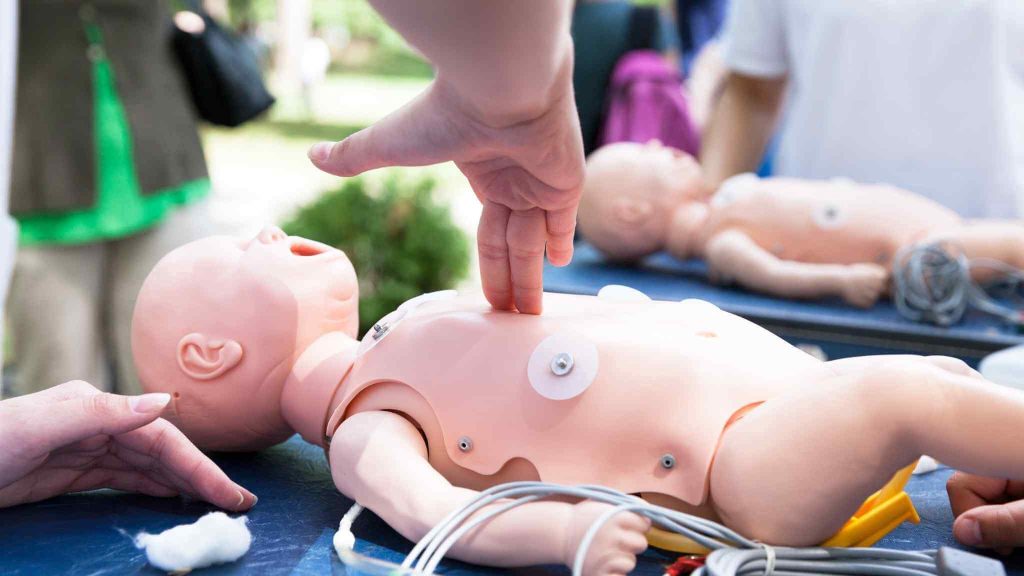Learn From a First Aid and CPR Course for a Child and Baby

First Aid and CPR Course for a Child and Baby
Dealing with an emergency with babies and children is a very different situation to administering first aid to adults.
Not only is the delivery of first aid situations often different, but dealing with a small scared child and looking after the parents can really require a whole different set of skills.
Young children can go into shock during or after an emergency situation, and this is less likely in an adult. For example if a baby has a large burn, they may drop their blood pressure and go pale and floppy with no prior warning. This is because they may have lost fluid or electrolytes and there is a discrepancy between what the body needs and what the body can deliver oxygen and nutrient wise.
Baby first aid
There are some vast differences with the way we would deliver cardiopulmonary resuscitation on a baby and a child.
Cardiopulmonary resuscitation consists of chest compressions and rescue breaths. Guidelines tell us to complete 30 compressions to two rescue breaths, continuously until help arrives, the person recovers or you become physically exhausted.
This is the same advice whether the casualty is 1 day old or 100 years old.
When giving CPR to an adult, we use two hands, one on top of the other, fingers interlaced. This allows us to provide the optimum amount of pressure to be able to perform effective first aid in a resuscitation situation. CPR can be very exhausting, so this must always be done up on your knees.
This is not the force you need for a small baby or a child.
The recommendation for Baby CPR is using two fingers only. A baby or infant is how we would describe a child under the age of 12 months. We use two fingers on the breastbone, between the nipples and push down in a short sharp motion approx ⅓ of the depth of the chest at a rate of 2 per second.
Rescue breaths should be administered just using the contents of your cheeks, this is enough for a small baby, but it is important to also note that rescue breaths are not the main part of cardiopulmonary resuscitation, the compressions are 80% of a resus.
When performing rescue breaths on an infant, you should either place your mouth over their mouth and nose and form a good seal, or you should pinch the nose and form a good seal with your mouth around their mouth.
Child first aid
CPR on a child aged 1-8 years old is different again.
For the chest compressions on a child, it is advised to use one hand in the middle of the chest, between the nipples. Remain up on your knees to create maximum strength and momentum and give a short sharp push down approx ⅓ of the depth of the chest at a rate of 2 per second, followed by the two rescue breaths. Pinch the nose and create a good seal around the mouth.

Emergency situations
Choking first aid is by far the most common parental worry. It is also the most common reason for cancelled ambulances. This is likely because choking first aid is delivered quickly and effectively.
For choking first aid for an infant and child we use back blows and chest thrusts.
If a child puts something in their mouth or they are eating, and they start coughing, we can just support them and let them cough, as long as this is a good productive cough.
If the cough becomes weaker or there is a noise when they are breathing, we need to call emergency services and start first aid.
We start first aid with back blows. This is less invasive than chest thrusts.
A baby or young child can lay over your lap to deliver the first of five back blows. We lay the child over our lap face down, supporting the chin to keep the head in a neutral position, and the whole body angled slightly down at the head end.
Deliver 5 back blows, using the heel of your hand and placing a short sharp blow between the shoulder blades. Do a visual check of the airway between back blows by tilting the head towards you. The obstruction may be dislodged after one or two.
If the baby or child continues to have a weak cough and/or noisy airway, turn them over and commence chest thrusts.
With an infant, use two fingers at the same point as CPR is delivered, between the nipples, and give a short sharp push down, leaving a few seconds between each chest thrust as you recheck the airway. Continue to give 5 chest thrusts in total.

If the child remains the same but is still responsive, continue to alternate 5 back blows and 5 chest thrusts until emergency services arrive or the obstruction is dislodged.
If the child stops breathing normally or at all, start CPR. Always make sure the ambulance is on its way.
First Aid Training
There are a few more differences between adult and child first aid, but we will just tackle one more here today, and that is febrile seizures. They can look exactly like an epileptic seizure. These happen when a small child’s temperature rises quickly. It is normally due to an illness that had not yet been apparent. Children aged between 6 months and 6 years are most affected.
There is nothing you can do to stop a seizure, the child should just be supported on a soft surface. Call an ambulance and take note of how long the seizure lasts. Put the child in the recovery position when the seizure has finished and await an ambulance.
The good news is that although scary, these types of seizures are rarely harmful to a child.
You will learn about seizures in all of our first aid courses
First Aid Courses
The First Aid Nest specialise in group workplace first aid Australia wide and we run public classes in Sydney..
We offer lots of delivery options from 80% online to 100% full face to face. It’s entirely up to you and how your workforce would best learn.
Contact us today or simply book via our website and we will be in touch within 24 hours to lock in a date for you. We can’t wait to meet you!


